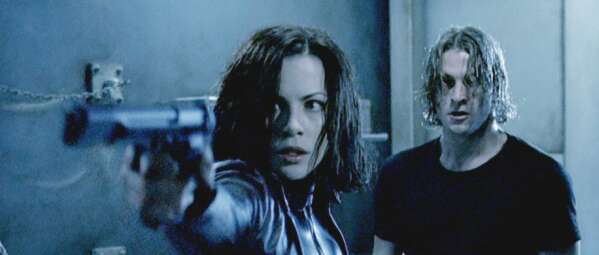 ★★★½
★★★½
“Vampires and Werewolves and PVC, oh my!”
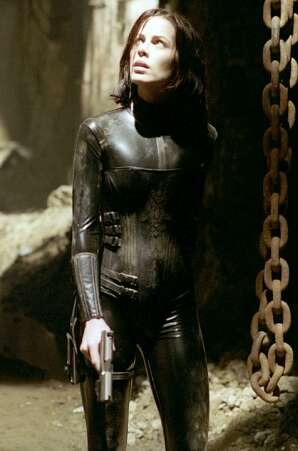 The day before this opened, we watched a “documentary” on AMC, entitled Fang vs. Fiction: The Real Underworld of Vampires and Werewolves. Quotes used advisedly, as they must be when the program interviewed someone who said he was a werewolf. Regrettably, despite our yelling at the TV, he refused to transform on camera, claiming it was too taxing. Wuss. What it did demonstrate was that the old stereotypes are alive and well – or at least undead and well. And so it is with Underworld: the vampires all dress in black, and mope around a mansion like 18th-century slackers. Not what I’d be doing if I was an immortal. Which is probably why I amn’t.
The day before this opened, we watched a “documentary” on AMC, entitled Fang vs. Fiction: The Real Underworld of Vampires and Werewolves. Quotes used advisedly, as they must be when the program interviewed someone who said he was a werewolf. Regrettably, despite our yelling at the TV, he refused to transform on camera, claiming it was too taxing. Wuss. What it did demonstrate was that the old stereotypes are alive and well – or at least undead and well. And so it is with Underworld: the vampires all dress in black, and mope around a mansion like 18th-century slackers. Not what I’d be doing if I was an immortal. Which is probably why I amn’t.
A bit of an exception is Selene (Beckinsale), a “death dealer”, part of a team of vampires who go out and hunt down werewolves – the two races have been at war for the past fourteen centuries. When she discovers a party of lycanthropes following a human, Michael Corvin (Speedman), she realises something is up, and uncovers a plot to create a vamp-wolf hybrid. She awakens her mentor, Viktor (Nighy) from his slumber 100 years too soon, which brings down the wrath of clan leader Kraven (Broly), who is ‘suspicious’ in more ways than one. Add her growing feelings for Corvin, and life is going to be kinda complex for Selene.
There’s a lot to admire about this film. Beckinsale is great, and the look of the film far surpasses what you’d expect from the budget ($20m) – it’s filmed in an almost monochrome way, and this makes sense, given it takes place almost entirely at night. The script holds together elements which feel supernatural, with a healthy dose of science: no garlic, no holy water, and no crosses here, but daylight and silver still do the job, however.
 What doesn’t work, on any level, is the Selene-Corvin relationship, which is never given any reason to blossom as it does. Worse, still, though the film is told largely from Selene’s point of view, at the end, it’s Corvin who has to battle against The Big Bad [and I’d best not say who that is; the film takes delight in pulling the carpet out from under the viewer]. Sure, Selene gets to deliver the coup de grace – and impressively so – but reducing the heroine to someone left holding her man’s coat, is mostly why this one doesn’t get our seal of approal. Making it even more embarrassing, by this stage, the hero looks like a blue version of the Incredible Hulk.
What doesn’t work, on any level, is the Selene-Corvin relationship, which is never given any reason to blossom as it does. Worse, still, though the film is told largely from Selene’s point of view, at the end, it’s Corvin who has to battle against The Big Bad [and I’d best not say who that is; the film takes delight in pulling the carpet out from under the viewer]. Sure, Selene gets to deliver the coup de grace – and impressively so – but reducing the heroine to someone left holding her man’s coat, is mostly why this one doesn’t get our seal of approal. Making it even more embarrassing, by this stage, the hero looks like a blue version of the Incredible Hulk.
And that’s a shame, since the first half in particular is a joy to behold. It hits the ground running, with a subway shootout that will likely leave your popcorn quietly forgotten in your lap, and Selene’s independent and feisty streak is swiftly established, rapidly winning us over. Also worthy of praise is Nighy, who exudes exactly the sort of aristocratic grumpiness you’d expect from an immortal being who has just been shaken roughly awake. Neither Speedman nor Broly make any impression at all – the former is perhaps more forgivable (he’s a mere human, after all), but you’d expect a vampire leader to ooze charisma and personality. Or at least have one…
The most obvious influences are Blade 2 – not least in the Eastern European setting (for the dark streets of Prague, read the dark streets of Budapest; both are now overused, we need to discover a new continent or something) – and The Matrix, with Beckinsale dressing like Carrie-Anne Moss on her way to Goth-Industrial Nite. Plenty of slow-mo and wirework enhance the feeling that this is a particularly murky corner of the Wachowski Brothers world.
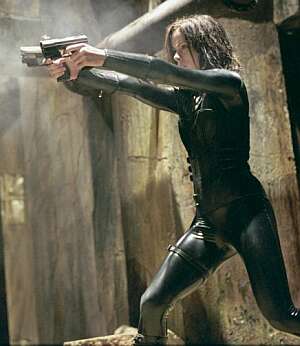 There are some plot points which are never quite explained. At one point, Selene hides Corvin in a safe house, which then mysteriously comes under attack from the lycanthropes. How did they know? Why the werewolves don’t take advantage of the daylight, and avoid moving around at night when the vampires are about? It probably also gets rather too embroiled in creating an entire society and culture for the vampires, explaining stuff not necessary to a 90-minute movie – that’s why it’s actually a 121-minute movie.
There are some plot points which are never quite explained. At one point, Selene hides Corvin in a safe house, which then mysteriously comes under attack from the lycanthropes. How did they know? Why the werewolves don’t take advantage of the daylight, and avoid moving around at night when the vampires are about? It probably also gets rather too embroiled in creating an entire society and culture for the vampires, explaining stuff not necessary to a 90-minute movie – that’s why it’s actually a 121-minute movie.
And, some lawyers believe, not an original one. Sony are being sued by game makers White Wolf, who allege 60 points of copyright infringement with their games. Personally, this sounds like a cheap publicity ploy, but to add to the tension, Beckinsale left the father of her child, Michael Sheen, who plays the head of the werewolves, and is now shacked up with the film’s director, Len Wiseman. Bet that made for a cheerful wrap party. Overall, this is disappointing – however, only slightly so, and for most of the movie, it’ll provide plenty to keep movie-goers with horror/action tendencies entertained. And we also got to see the trailer for Kill Bill and the sublime teaser for Resident Evil: Apocalypse (not what it appears at first!) – as female action heroine sessions go, a pretty good day’s work.
[A lot of people seem to come here looking for info on the weapons Beckinsale used in the film. From what I’ve been told, she used a range of guns, including a Walther P99 9mm and the Beretta 92FS and/or 93R’s. Hope this helps! :-)]
Dir: Len Wiseman
Stars: Kate Beckinsale, Scott Speedman, Shane Brolly, Bill Nighy





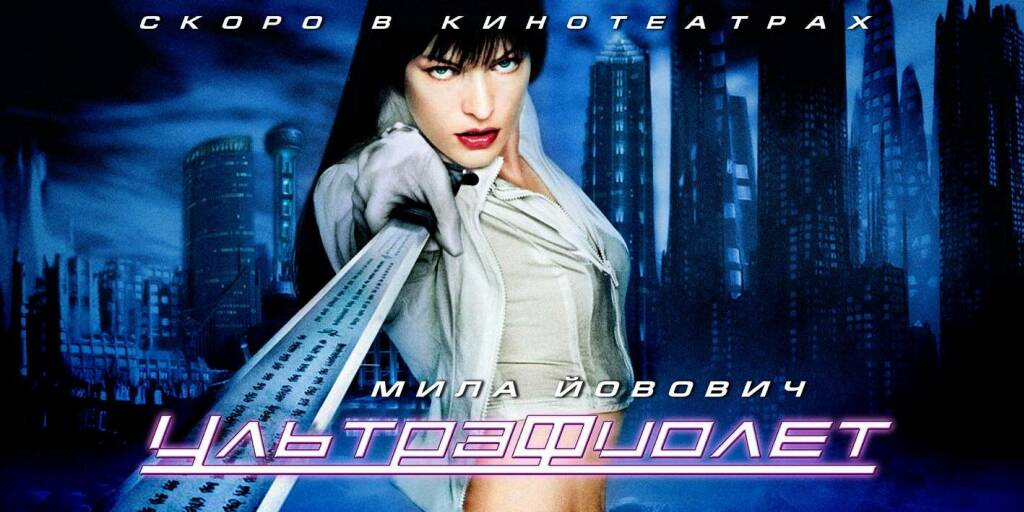 ★★★★½
★★★★½ By my reckoning, that’s now five straight big-budget action-heroine pics in a row not to be screened for critics: in addition to these two, add Domino, Aeon Flux and Bloodrayne. Yet this is, like the others, no real disaster: indeed, this is a luridly visual, CGI-overkill of a movie, which unfolds exactly like the comic-books used to striking effect in the opening credits, and wears its HK action (among other) influences on its sleeve.
By my reckoning, that’s now five straight big-budget action-heroine pics in a row not to be screened for critics: in addition to these two, add Domino, Aeon Flux and Bloodrayne. Yet this is, like the others, no real disaster: indeed, this is a luridly visual, CGI-overkill of a movie, which unfolds exactly like the comic-books used to striking effect in the opening credits, and wears its HK action (among other) influences on its sleeve.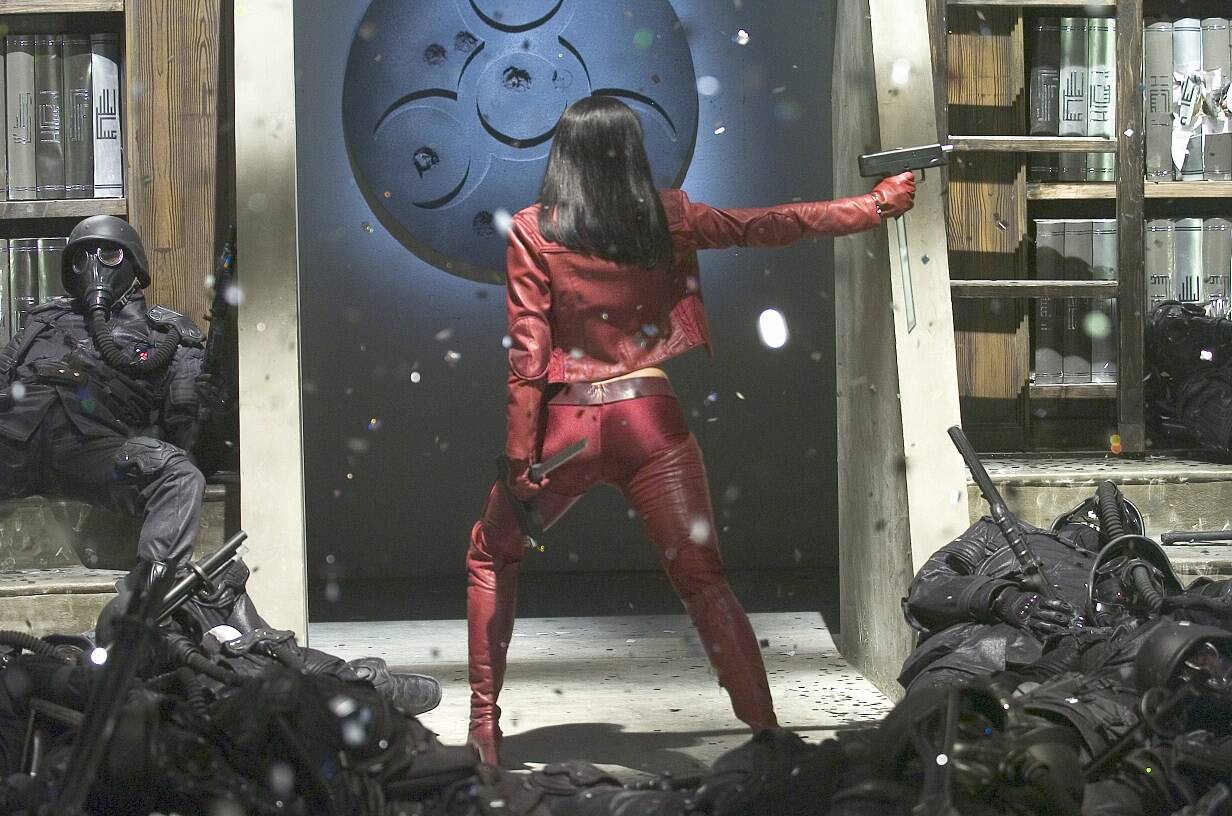 As with Resident Evil, the main asset is Jovovich, who projects just the right mix of chic bad-ass – her belly-button gets so much screen time, it deserved its own credit – with wardrobe and hair changing colour in synch with her mood [and, I believe, it’s far more likely nanotech will be used for this kind of thing than, say, curing cancer] When her co-vampires prepare to take her on, pointing out they’re just as fast and strong as she is, her response is, “Yeah, but are you as pissed-off as I am?”. It’s hard to imagine any other actress who’d come out with such a cheesy line and get away with it.
As with Resident Evil, the main asset is Jovovich, who projects just the right mix of chic bad-ass – her belly-button gets so much screen time, it deserved its own credit – with wardrobe and hair changing colour in synch with her mood [and, I believe, it’s far more likely nanotech will be used for this kind of thing than, say, curing cancer] When her co-vampires prepare to take her on, pointing out they’re just as fast and strong as she is, her response is, “Yeah, but are you as pissed-off as I am?”. It’s hard to imagine any other actress who’d come out with such a cheesy line and get away with it.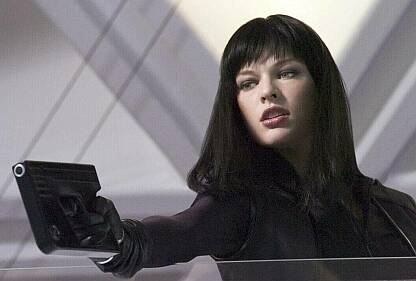 Otherwise, however, the action is excellent, CGI enhancing the impact of the fights. There is a certain sameness, it must be admitted – Violet faces multiple opponents and kicks their arses from here to next week – but Wimmer takes this basic theme and runs enough variations on it that it doesn’t become boring. Visually, it is hard to work out where the sets stop and the plentiful effects work begins (to some extent, that’s true of the supporting cast as well, who don’t have really have much to do, and may be avatars). Either way, it looks fairly good, given the budget: as noted, it isn’t going for photorealism, though the motorcycle chase did look more like an Xbox game. But even little things like disposable mobile phones, indicate genuine thought has gone into the edges. Perhaps more so than the plot, truth be told.
Otherwise, however, the action is excellent, CGI enhancing the impact of the fights. There is a certain sameness, it must be admitted – Violet faces multiple opponents and kicks their arses from here to next week – but Wimmer takes this basic theme and runs enough variations on it that it doesn’t become boring. Visually, it is hard to work out where the sets stop and the plentiful effects work begins (to some extent, that’s true of the supporting cast as well, who don’t have really have much to do, and may be avatars). Either way, it looks fairly good, given the budget: as noted, it isn’t going for photorealism, though the motorcycle chase did look more like an Xbox game. But even little things like disposable mobile phones, indicate genuine thought has gone into the edges. Perhaps more so than the plot, truth be told.









































 ★★★★
★★★★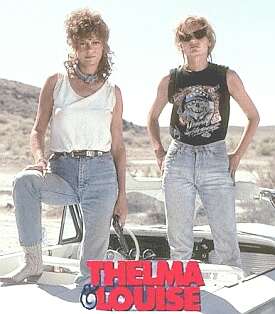 But to quote one character in the movie, “Bitches from
But to quote one character in the movie, “Bitches from 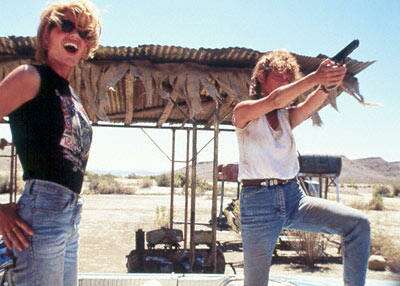 It becomes like having Andrea Dworkin yelling in your face for two hours, yet the film’s moral is that if women empower themselves, death inevitably results. Khouri seems to be saying, “You can only beat the system by suicide,” while the patriarchy watches from behind its sunglasses and firearms. We
It becomes like having Andrea Dworkin yelling in your face for two hours, yet the film’s moral is that if women empower themselves, death inevitably results. Khouri seems to be saying, “You can only beat the system by suicide,” while the patriarchy watches from behind its sunglasses and firearms. We 
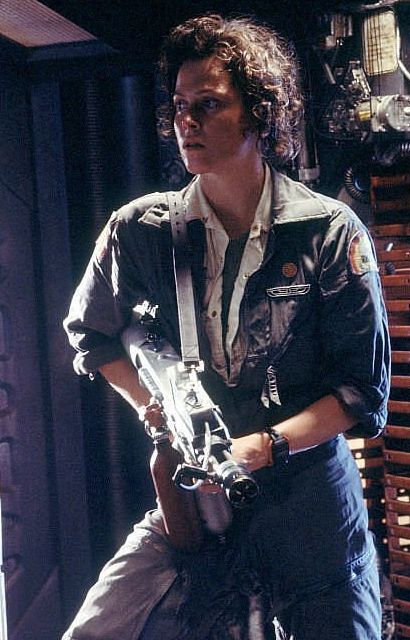
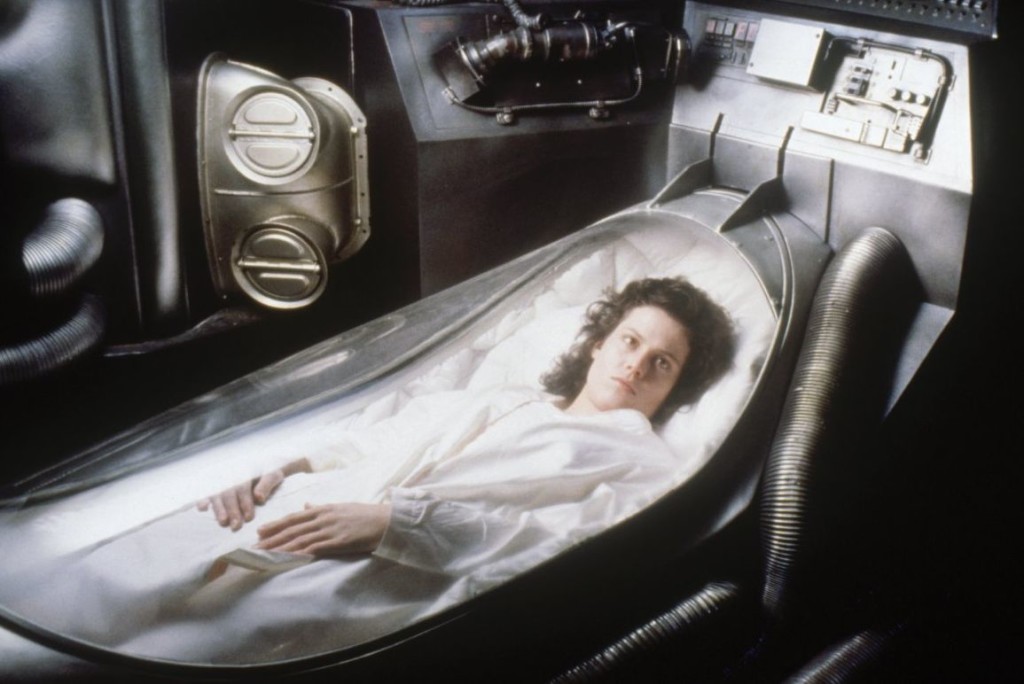
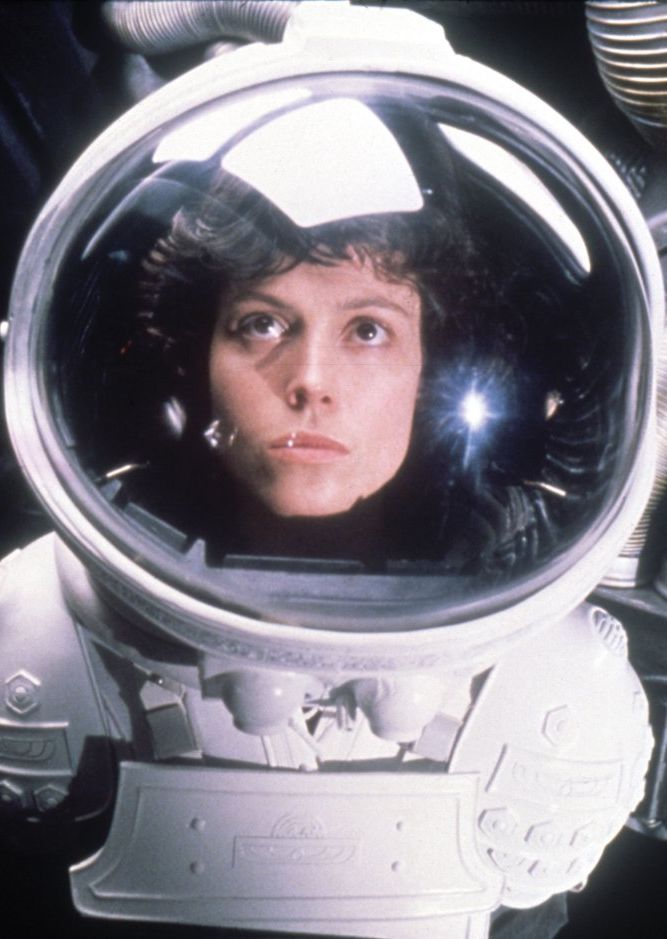
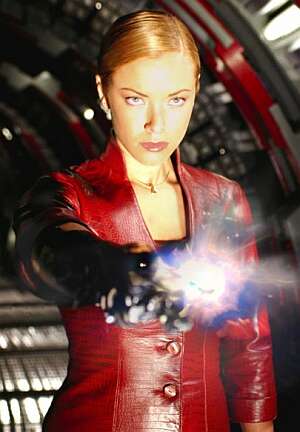 I feel a certain camaraderie with Arnie, since I’ve largely grown up alongside this series of movies, which is probably his finest work. I was at university when the first one came out; the second saw me living the life of a bachelor in London; and the latest installment finds me a happily married man in Arizona. Just as I’ve evolved, so have his opponents: they’ve become harder, faster and more difficult to kill; my sarcasm has been honed to a lethal edge, thanks to living with two teenagers and a pair of dogs.
I feel a certain camaraderie with Arnie, since I’ve largely grown up alongside this series of movies, which is probably his finest work. I was at university when the first one came out; the second saw me living the life of a bachelor in London; and the latest installment finds me a happily married man in Arizona. Just as I’ve evolved, so have his opponents: they’ve become harder, faster and more difficult to kill; my sarcasm has been honed to a lethal edge, thanks to living with two teenagers and a pair of dogs.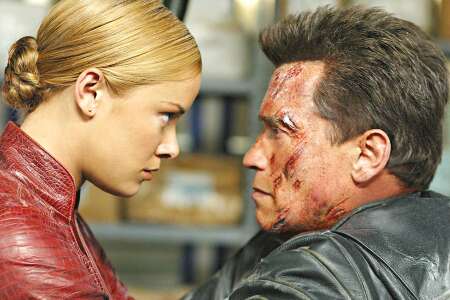 The plot is effectively a retread of the previous entry, with John Connor (Stahl) a drug-confused member of the underclass since his mother died of leukemia (possibly Hollywoodese for “Linda Hamilton wanted too much money”). He goes on the run with former schoolmate Kate (Danes), whose father just happens to be the guy in charge of SkyNet. What are the odds against that? These two are supposed to meet and fall in love, but there’s a bump on their road to happiness, in the shape of a nuclear war due to start at 6:18 pm that night.
The plot is effectively a retread of the previous entry, with John Connor (Stahl) a drug-confused member of the underclass since his mother died of leukemia (possibly Hollywoodese for “Linda Hamilton wanted too much money”). He goes on the run with former schoolmate Kate (Danes), whose father just happens to be the guy in charge of SkyNet. What are the odds against that? These two are supposed to meet and fall in love, but there’s a bump on their road to happiness, in the shape of a nuclear war due to start at 6:18 pm that night.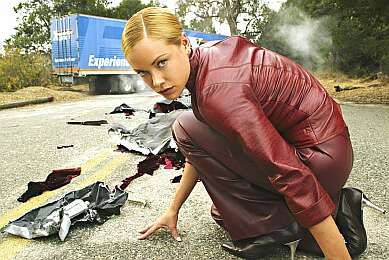 One interesting point, is that nobody ever mentions the T-X’s gender. The concept certainly held potential for a lot of PMS-type comments, but save for one minor joke involving Victoria’s Secret, sexuality is entirely kept out of things. The T-X, with her impossibly perfect hair and the coolest red leather jacket worn by a actress playing a superviolent female robot since Eve of Destruction, just goes about her business like an evil babysitter.
One interesting point, is that nobody ever mentions the T-X’s gender. The concept certainly held potential for a lot of PMS-type comments, but save for one minor joke involving Victoria’s Secret, sexuality is entirely kept out of things. The T-X, with her impossibly perfect hair and the coolest red leather jacket worn by a actress playing a superviolent female robot since Eve of Destruction, just goes about her business like an evil babysitter.